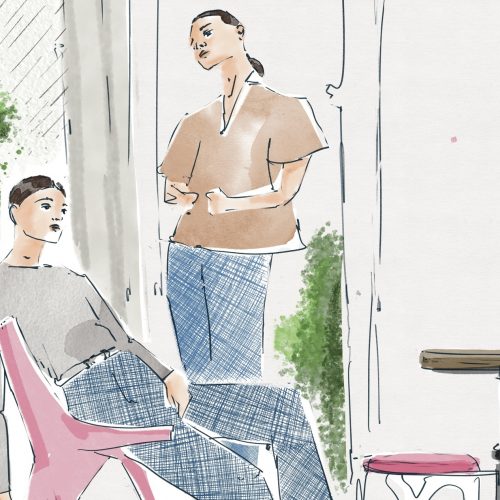The Good “Doughnut” for Our Wellbeing
After the 2008 global financial crisis, the gap between wellbeing and Gross Domestic Product (GDP) became more noticeable. Unemployment and poverty are getting higher and many countries like Russia and Turkey, to name a few, show slow progress in wellbeing; even when the countries' economies recovered. Economic development is no longer an ideal compass to measure overall success. And now, with the pandemic hits that are affecting our whole livelihood, it's time to consider the "doughnut."
To receive the Luxiders newsletter sign up here
RETHINKING COUNTRY'S SUCCESS BAROMETER
Economic growth is not necessarily a good thing. Take an example of how GDP measures the total economic output of a country, which only consider monetary terms—something that is tangible like goods and trade. GDP prioritises material progress from a country and neglect the value of unpaid work, often performed by women, including household chores, child and eldercare. In countries where family and community bond are strong, this "voluntary" work is a daily practice.
The other thing that the GDP does not include is the excessive use of natural resources that harms the environment and affects the quality of life for those living in that area. We are talking about pollution, underpaid labour and longer working hours. No wonder we are now challenged by climate change and other sustainability issues resulting from our economic practices.

HERE COMES THE DOUGHNUT ECONOMICS
In the year 2012, Kate Raworth, a British economist from Oxford's University, introduced the Doughnut Economics model. The model aims to "act as a compass for human progress," turning last century's degenerative economy into this century's regenerative one. Although a doughnut-shaped economy sounds rather bizarre, the model itself makes sense, and the metaphor is straightforward.
Let's imagine a heavenly doughnut. The doughnut's outer crust is the ceiling of Earth's life-giving systems, which we shouldn't cross in order to preserve the climate and keep the air and water clean. Its hollow centre describes the proportion of people who lack access to basic necessities such as food, electricity, healthcare, and political voice. While the edge of the inner ring represents minimal standards for a decent life that do not compromise the environment's wellbeing.
Between this inner ring and the doughnut's outer crust lies humanity's sweet spot where people can live fulfilling lives without overshooting the planet's resources. Thus, the Doughnut Economics model serves as a model for true sustainability, one where social and economic inequality isn't inherently built-in.
"We need an economy that thrives whether it is growing or not"—Kate Raworth
THE DOUGHNUT FOR THE CITIES
Amsterdam's Dutch capital became the first city worldwide to implement the doughnut economics model in April last year—the time when the country had one of the world's highest mortality rates from the coronavirus pandemic. The deputy mayor of the City Amsterdam, Marieke van Doorninck said they had some doubts regarding the timing.
"But it turned out that people were also longing for ideas to rebuild our economy after the crisis. Our circular strategy is a tool to ensure we don't go back to 'business as usual' but look forward to a way to shape our economy differently." said van Doorninck.

Amsterdam the "doughnut" city

Amsterdam Denim Day © Team Peter Stigter
The city's ambition is to bring all 872,000 residents to reside inside the doughnut, ensuring everyone has access to a good quality of life without putting more pressure on the planet. Amsterdam is introducing massive infrastructure projects, employment schemes, and new policies for government contracts to that end to achieve the goal.
The city's government is also pushing the harmful fashion industry to do its part. Amsterdam claims to have the highest concentration of denim brands in the world (they even have Amsterdam Denim Day! ). Denim is one of the most resource-intensive fabrics in the world, with each pair of jeans requiring thousands of gallons of water and the use of polluting chemicals.
Amsterdam is not the only city to embrace the doughnut. In late September last year, Brussels, Belgium's capital city, adopted the doughnut. According to Raworth, Copenhagen's city council majority decided to follow Amsterdam's example in June, as did the small city of Dunedin, New Zealand, in September, and Nanaimo, British Columbia, in December. In the U.S., Portland, Ore., is preparing to roll out its own version of the doughnut, and Austin may be close behind.

+ Words: Alvia Zuhadmono, Luxiders Magazine
Sustainable communication student | Sweden-based writer
Connect with her through LinkedIn




